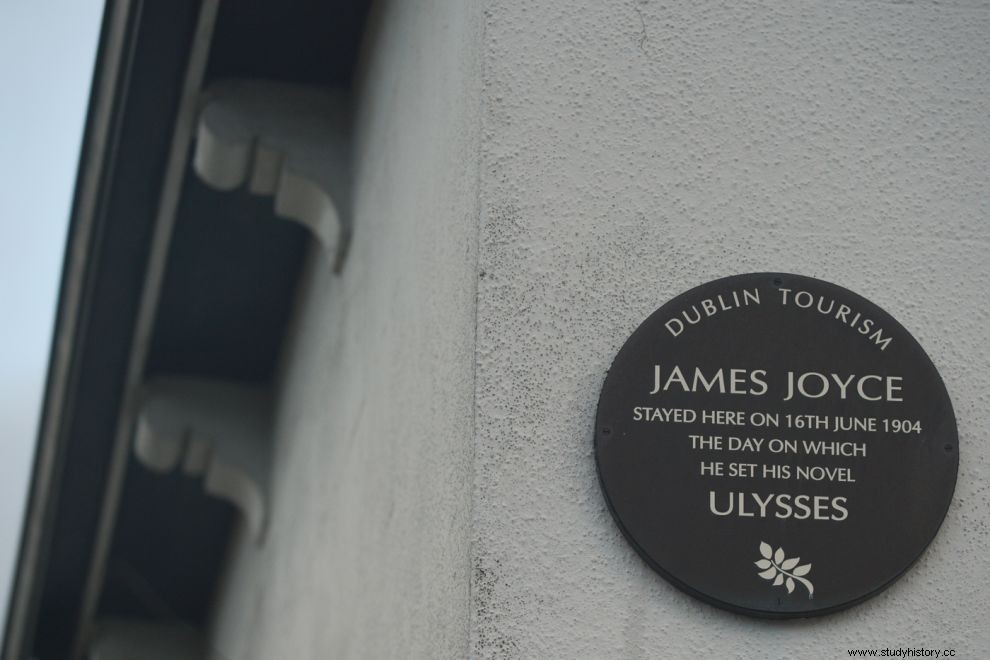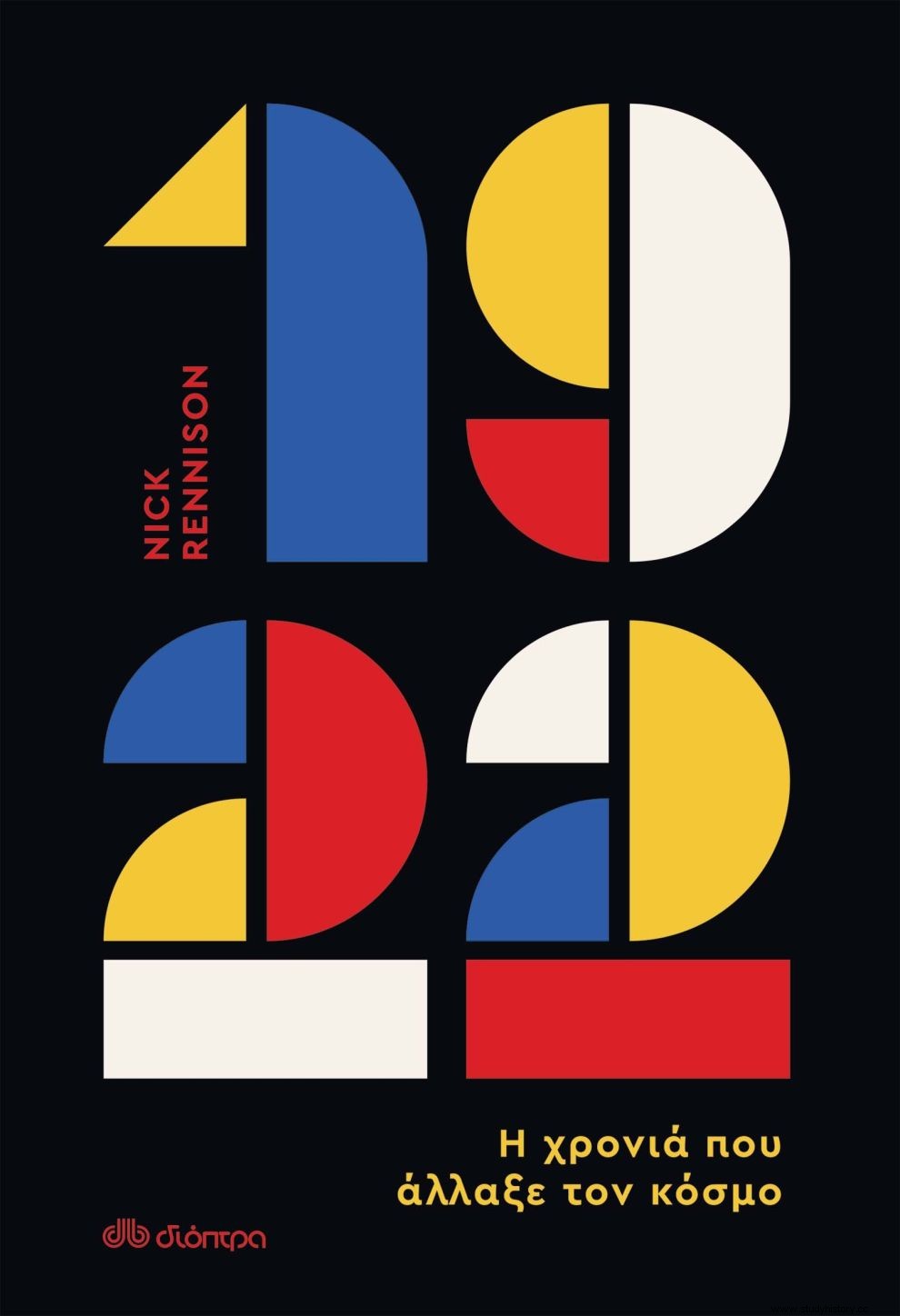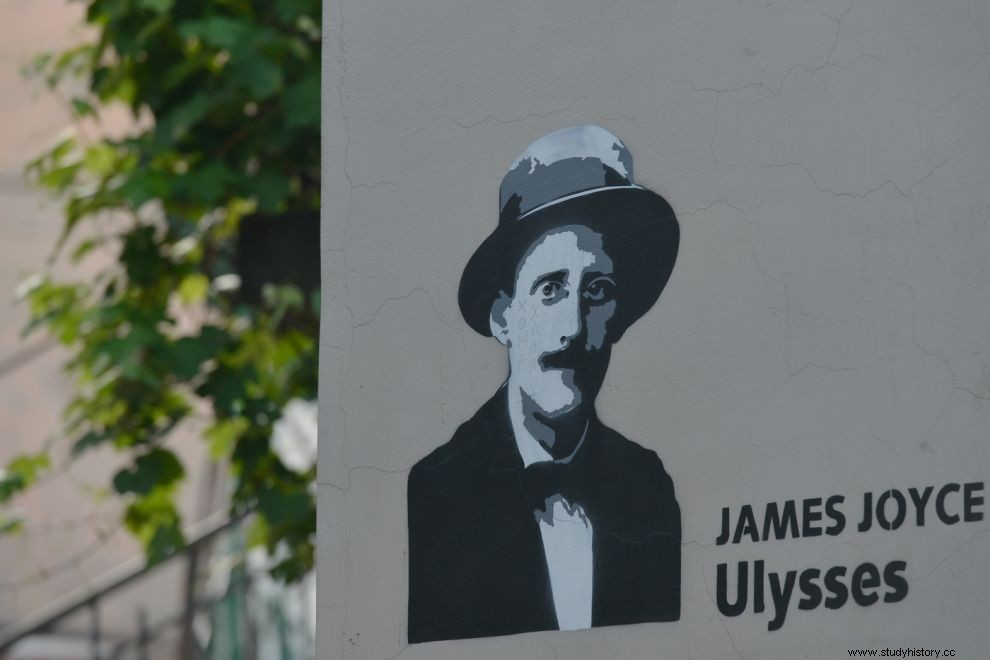He was born on February 2, 1882. Ulysses, his greatest work and one of the most iconic books in history, was published on February 2, 1922 in Paris, James Joyce's 40th birthday.
The events of Ulysses unfold on June 16, 1904, the day Joyce first went on a date with Nora Barnacle, the woman of his life.
With her, he had two children.

Nick Rennison's book, "1922 - The Year That Changed the World" , brings the landmark year of '22 back to life by focusing on its special significance. The Ottoman Empire collapsed after six centuries. The British Empire began to crumble. The Soviet Union was founded while Mussolini's Italy was becoming the first fascist state. Greece was plunged into mourning with the Asia Minor Catastrophe. Tutankhamun's tomb came to light, the use of insulin caused a revolution.
On the 320 pages of the publication, you will visit month by month the most important events that marked their time, but also the developments that determined the global reality in the decades that followed.
The Magazine obtained excerpts from the book published by Dioptra and presents them below.
The first quote refers to the great James Joyce's relationship with the number "2" which marked the publication of The Ulysses, and the second to the story of Leonard Thompson, the 11-year-old who became the first diabetic patient to be given insulin . More excerpts will follow in the coming months.

February
Joyce and Odysseus
The Irish author James Joyce was a man with an obsession bordering on superstition when it came to the significance of dates. As you know, the events of Odysseus , his best-known work and, some argue, the most important novel of the 20th century, takes place on June 16, 1904, the day the author first went on a date with Nora Barnacle, the woman who would become his lifelong companion the life. He was determined to release Odysseus on February 2, 1922. That day was his 40th birthday, but Joyce also liked the numerological coincidence of 2/2/22.
Preparing the manuscript for this auspicious date was not an easy task. As those who have read Odysseus know , was a manuscript that would have caused panic in any typist who undertook to decipher it. As if it were not enough that Joyce's speech and style were unusual, his handwriting was often illegible and his pages were littered with erasures and arrows, indicating where he wanted the additional material to go, which was written in the margins . A typist had threatened to kill herself if she was forced to continue working. Another had rung the doorbell of Joyce's apartment one morning, thrown the manuscript on the doorstep, and run away.
The book was eventually published, in an edition of 1,000 copies, by Sylvia Beach, the American owner of the Shakespeare and Company bookstore in Paris. (Important extracts were previously serialized in The Little Review , between March 1918 and December 1920.) Another edition, 2,000 copies, was published later in the year, this time by the Egoist Press, founded by Joyce's patron and admirer Harriet Shaw Weaver.
Joyce was able to celebrate both his 40th birthday and the publication of his masterpiece by dining at Ferrari's, one of his favorite Parisian restaurants, with his family and a select group of friends. At the time there were only two copies of Odysseus in the French capital. (The remaining 998 were still at the printer in Dijon.) One had been placed in the shop window of Shakespeare and Company. The other accompanied its author to Ferrari's. According to his biographer, Richard Ellman, Joyce “placed it under his chair... Everyone asked to see it open, but he seemed to avoid showing it. After dessert, he finally opened the package and left the book on the table.' They toasted and Joyce, who had seemed oddly sullen earlier, now seemed moved by the event.
When copies hit the press later in the year, many of the reviews were, as expected, poor. Neither Joyce nor anyone else expected that the Daily Express critic would like the book and S.P.M. Mace, the reviewer, did not disappoint them. “Our first impression is one of utter disgust,” he began and concluded by saying that:“Reading Mr. Joyce's work is like taking a trip to Bolshevik Russia. Everything that is taken for granted goes for a walk." For some inexplicable reason, the Sporting Times , far better known for their coverage of horse racing than their interest in contemporary literature, also chose to review Joyce's masterpiece. We can tell the newspaper columnist didn't like it. "Its main content is enough to make an Ottentot sick," he opined, and went on to tell his readers that it "seems to have been written by a perverted lunatic who has become an expert in latrine literature."
The poet Alfred Noyce, remembered today—if he is remembered at all—for "The Highwayman," his stylish ballad about a robber and his doomed love affair, almost had an apoplexy of horror when he saw it. "It is simply the dirtiest book ever printed," he said.
Even some of the readers who might have been expected to appreciate what Joyce was attempting were treated with disdain. Virginia Woolf was a leading figure of modernism, but her views on Ulysses they often seem motivated more by social snobbery than literary insight. "It seems to me a vulgar and obscene book," she confided in her diary in August, "the book of a self-taught workman, and we all know how annoying these people are, how selfish, obstinate, crude, impressionable, and ultimately disgusting." He also called it "the work of a burly undergrad picking at his pimples."

There were, of course, readers who understood and appreciated Joyce's genius. The American literary critic and pioneer in the academic recognition of popular culture, Gilbert Selds, wrote that "this epic of defeat, in which there is not a single page scribbled, not a moment of weakness, in which whole chapters are monuments of strength and glory of the written word, this itself is a victory of creative intelligence over the chaos of uncreated things".
For many years, this perhaps mythical beast, the "common reader", found it difficult to form an opinion about Odysseus one way or another. The publication of the book, due to its alleged obscenity, was banned in Britain, the USA and many other countries. Joyce's novel became an object of literary contraband, readable only if one found a bootleg edition or had access to a copy that had been smuggled through customs.
January
Insulin treats diabetes
On January 11, a thirteen-year-old student from Toronto, Leonard Thompson, opened a new page in medical history when he became the first patient with diabetes to be given insulin. Leonard, who weighed just 30kg and was constantly in a diabetic coma while in his bed at Toronto General Hospital, was close to death when his father agreed to give him insulin. The drug had not previously been tested on humans. The first dose had no effect on the boy's condition. It actually caused an allergic reaction, but he was given a purer version of the insulin twelve days later and this time it worked. His blood glucose levels returned to normal and his most dangerous symptoms began to disappear.
The fact that insulin had therapeutic potential had been advocated by the Canadian physician and scientist Frederick Bunting – working with a younger colleague, Charles Best – and the two had presented their ideas to J.J. R. MacLeod, professor of physiology at the University of Toronto, last year. MacLeod encouraged them, provided them with grants and laboratory space, and himself contributed to experiments aimed at creating insulin that could be used in diabetic patients. MacLeod and Bunting, who was still only in his thirties, were awarded the Nobel Prize in Medicine in 1923. Leonard Thompson lived another thirteen years and died of pneumonia, a complication of his diabetes, in April 1935, aged 26. .
The version description:
1922 was a year of great upheaval.
The events that happened then defined the rest of the twentieth century and in many cases continue to affect us even today, a full hundred years later.
The Ottoman Empire collapsed after six centuries. The British Empire began to shake, from Ireland to India.
New states and new polities emerged. The Soviet Union was founded, while Mussolini's Italy became the first fascist state.
And Greece was plunged into mourning with the Asia Minor Catastrophe...
Tutankhamun's tomb came to light, the use of insulin caused a revolution in medicine. And in Munich a young demagogue named Adolf Hitler was briefly imprisoned...
Nick Rennison's book brings this landmark year back to life, a year that changed the world.
It gives us an idea of what people's lives were like back then – what they sang, which celebrities they admired, what they feared, what they dreamed of – and at the same time unfolds before us the events that shook their daily lives and laid the foundations for the cosmogony that would follow in the turbulent twentieth century.
1922 is not a faded period photo.
It is our life – just before it becomes ours.
According to the famous saying of British author Leslie Poles Hartley, "the past is a foreign country. They do things differently there".
A century later, the events of 1922 still have many and varied effects.
Nick Rennison presents in a way that is enlightening and entertaining at the same time snapshots of a past that is incredible how many similarities it has with today.
